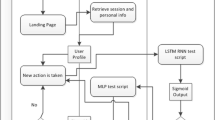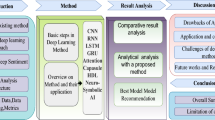Abstract
Nowadays Review websites, such as Amazon and Yelp, allow users to post online reviews for several products, services and businesses. Recently online reviews play a great role in influencing the shopping decisions made by consumers. These reviews provide consumers with information and experience about product quality. Online reviews commonly comprise of a free-text format and user star-level rating Out of five. People believe that reviews will do help to the rating predication based on the idea that high star rating may significantly be attach with really good reviews. However, user’s rating star-level information is not usually available on many online review’s websites. Due to, it’s not possible for a given user to rate every product. On the other hand, most online reviews are written in free-text format, and therefore difficult for computer system to understand and analyze it. Identifying ratings for online reviews lately become an important topic in machine learning. In this paper, we propose a review rating prediction framework using deep learning. The framework consists of two phases based on deep learning bidirectional gated recurrent unit Bi-GRU model architectures, the first phase used for polarity prediction and the second phase used to predict review rating from review text. Extensive experiments were conducted to evaluate the proposed framework on two dataset Amazon and yelp datasets which are real-world datasets. The experimental results demonstrated that the proposed framework can significantly enhance the rating prediction in term of precision, recall, F1-score and root mean square root RMSE compared with the baseline approaches on different datasets.





Similar content being viewed by others
References
Agrawal R, Gupta A, Prabhu Y, Varma M (2013) Multi-label learning with millions of labels: recommending advertiser bid phrases for web pages. In: Proceedings of the 22nd international conference on world wide web, ACM, pp 13–24
Akhtar MS, Kumar A, Ghosal D, Ekbal A, Bhattacharyya P (2017) A multilayer perceptron based ensemble technique for fine-grained financial sentiment analysis. In: Proceedings of the 2017 conference on empirical methods in natural language processing. pp 540–546
Bayhaqy A, Sfenrianto S, Nainggolan K, Kaburuan ER (2018) Sentiment analysis about E-commerce from tweets using decision tree, K-nearest neighbor, and naïve bayes. In: 2018 international conference on orange technologies (ICOT), 23–26 Oct. 2018. pp 1–6. https://doi.org/10.1109/icot.2018.8705796
Boiy E, Hens P, Deschacht K, Moens M-F (2007) Automatic sentiment analysis in on-line text. In: Proceedings of the 11th international conference on electronic publishing. pp 349–360
Cho K, van Merrienboer B, Bahdanau D, Bengio Y (2014) On the properties of neural machine translation: Encoder-decoder approaches. In: Eighth workshop on syntax, semantics and structure in statistical translation, Doha, Qatar. pp 103–111
Devika M, Sunitha C, Ganesh A (2016) Sentiment analysis: a comparative study on different approaches procedia computer. Science 87:44–49
Ding X, Liu B, Yu PS (2008) A holistic lexicon-based approach to opinion mining. In: Proceedings of the 2008 international conference on web search and data mining. ACM, pp 231–240
Dyer C, Ballesteros M, Ling W, Matthews A, Smith NA (2015) Transition-based dependency parsing with stack long short-term memory. In: Proceedings of the 53rd annual meeting of the association for computational linguistics and the 7th international joint conference on natural language processing (Volume 1: Long Papers). pp 334–343
Elman JL (1990) Finding structure in time. Cognit Sci 14:179–211
Fan M, Khademi M (2014) Predicting a business star in yelp from its reviews text alone arXiv preprint arXiv:14010864
Gamallo P, Garcia M (2014) Citius: a naive-bayes strategy for sentiment analysis on english tweets. In: Proceedings of the 8th international workshop on semantic evaluation (SemEval 2014), pp 171–175
Gunasekara I, Nejadgholi I (2018) A review of standard text classification practices for multi-label toxicity identification of online content. In: Proceedings of the 2nd workshop on abusive language online (ALW2). pp 21-25
Hochreiter S, Schmidhuber J (1997) Long short-term memory. Neural Comput 9:1735–1780
Hochreiter S, Bengio Y, Frasconi P, Schmidhuber J (2001) Gradient flow in recurrent nets: the difficulty of learning long-term dependencies. A field guide to dynamical recurrent neural networks. IEEE Press, Piscataway
Kalchbrenner N, Grefenstette E, Blunsom P (2014) A convolutional neural network for modelling sentences arXiv preprint arXiv:14042188
Khairnar J, Kinikar M (2013) Machine learning algorithms for opinion mining and sentiment classification. Int J Sci Res Publ 3:1–6
Kim Y (2014) Convolutional neural networks for sentence classification. In: Proceedings of the 2014 conference on empirical methods in natural language processing (EMNLP). pp 1746–1751
Diederik P. Kingma JLB (2015) Adam: a method for stochastic optimization. In: 3rd international conference for learning representations, San Diego
Li F, Liu NN, Jin H, Zhao K, Yang Q, Zhu X (2011) Incorporating reviewer and product information for review rating prediction. In: Twenty-second international joint conference on artificial intelligence
Li Y, Wang X, Xu P (2018) Chinese text classification model based on deep learning. Future Internet 10:113
Liu B, Zhang L (2012) A survey of opinion mining and sentiment analysis. In: Aggarwal CC, Zhai C (eds) Mining text data. Springer US, Boston, pp 415–463. https://doi.org/10.1007/978-1-4614-3223-4_13
Luo W, Zhuang F, Cheng X, He Q, Shi Z (2014) Ratable Aspects over Sentiments: Predicting Ratings for Unrated Reviews. In: 2014 IEEE international conference on data mining, 14–17 Dec. 2014 pp 380–389. https://doi.org/10.1109/icdm.2014.14
McAuley J, Leskovec J (2013) Hidden factors and hidden topics: understanding rating dimensions with review text. In: Paper presented at the proceedings of the 7th ACM conference on recommender systems, Hong Kong, China
Mikolov T, Sutskever I, Chen K, Corrado GS, Dean J (2013) Distributed representations of words and phrases and their compositionality. In: Advances in neural information processing systems, pp 3111–3119. http://papers.nips.cc/paper/5021-distributed-representations-of-words-and-phrases-and-their-compositionality.pdf
Pang B, Lee L Seeing stars: Exploiting class relationships for sentiment categorization with respect to rating scales. In: Proceedings of the 43rd annual meeting on association for computational linguistics, 2005. Association for Computational Linguistics, pp 115–124
Pang B, Lee L (2008) Opinion mining and sentiment analysis. Found Trends® Inform Retr 2:1–135
Pang B, Lee L, Vaithyanathan S (2002) Thumbs up?: sentiment classification using machine learning techniques. In: Proceedings of the ACL-02 conference on Empirical methods in natural language processing-Volume 10, Association for computational linguistics, pp 79–86
Pennington J, Socher R, Manning C (2014) Glove: global vectors for word representation. In: Proceedings of the 2014 conference on empirical methods in natural language processing (EMNLP). pp 1532–1543
Popescu A-M, Etzioni O (2007) Extracting Product features and opinions from reviews. In: Kao A, Poteet SR (eds) Natural language processing and text mining. Springer London, London, pp 9–28. https://doi.org/10.1007/978-1-84628-754-1_2
Pranckevicius T, Marcinkevičius V (2017) Comparison of Naive Bayes, random forest, decision tree, support vector machines, and logistic regression classifiers for text reviews classification. Balt J Mod Comput 5:221. https://doi.org/10.22364/bjmc.2017.5.2.05
Qu L, Ifrim G, Weikum G (2010) The bag-of-opinions method for review rating prediction from sparse text patterns. In: Paper presented at the proceedings of the 23rd international conference on computational linguistics, beijing, China
Rebiai Z, Andersen S, Debrenne A, Lafargue V (2019) SCIA at SemEval-2019 Task 3: sentiment analysis in textual conversations using deep learning. In: Proceedings of the 13th international workshop on semantic evaluation. pp 297–301
Tai KS, Socher R, Manning CD (2015) Improved semantic representations from tree-structured long short-term memory networks arXiv preprint arXiv:150300075
Tang D, Qin B, Liu T (2015a) Document modeling with gated recurrent neural network for sentiment classification. In: Proceedings of the 2015 conference on empirical methods in natural language processing, Lisbon, Portugal. pp 1422–1432
Tang D, Qin B, Liu T, Yang Y (2015b) User modeling with neural network for review rating prediction. Paper presented at the proceedings of the 24th international conference on artificial intelligence, Buenos Aires, Argentina
Tang D, Qin B, Feng X, Liu T (2016) Effective LSTMs for Target-dependent sentiment classification. In: Proceedings of COLING 2016, the 26th international conference on computational linguistics: Technical Papers. pp 3298–3307
Tyagi A, Sharma N (2018) Sentiment Analysis using logistic regression and effective word score heuristic. Int J Eng Technol 7:20–23
Xu J, Chen D, Qiu X, Huang X (2016) Cached Long short-term memory neural networks for document-level sentiment classification. In: Proceedings of the 2016 conference on empirical methods in natural language processing. pp 1660–1669
Zainuddin N, Selamat A (2014) Sentiment analysis using support vector machine. In: 2014 international conference on computer, communications, and control technology (I4CT), 2–4 Sept. 2014 pp 333–337. https://doi.org/10.1109/i4ct.2014.6914200
Author information
Authors and Affiliations
Corresponding author
Additional information
Publisher's Note
Springer Nature remains neutral with regard to jurisdictional claims in published maps and institutional affiliations.
Rights and permissions
About this article
Cite this article
Ahmed, B.H., Ghabayen, A.S. Review rating prediction framework using deep learning. J Ambient Intell Human Comput 13, 3423–3432 (2022). https://doi.org/10.1007/s12652-020-01807-4
Received:
Accepted:
Published:
Issue Date:
DOI: https://doi.org/10.1007/s12652-020-01807-4




